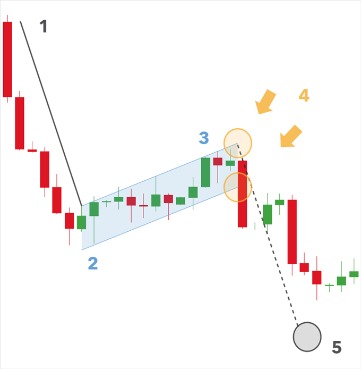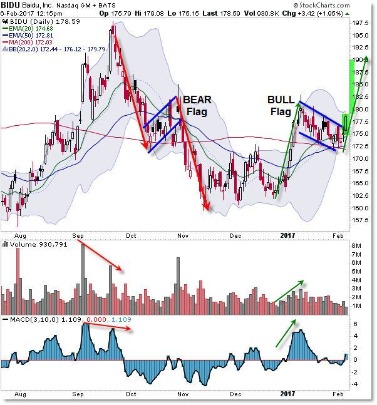OBV Knowledge Base
2022年2月11日
Content
The reason is the natural volatility that may affect the indicator signals. While looking at volume can help investors determine where price action might be headed, on-balance volume produces clearer signals that assist investors looking to act on a trade. Volume shows crowd sentiment as price bars carve out patterns that predict a bullish or bearish outcome.
The trader shouldn’t rely on the OBV indicator as to the core pillar of their strategy. It is just a tool to complement a stable and time-tested strategy. Trading on volume analysis on its own isn’t viable in today’s markets. Sophisticated institutional investors take this type of strategy to another level. They artificially drive the price up just for the small investors to follow and add to the prevailing trend. Retail investors often don’t want to lose out on capitalizing on potentially stable market momentum.
- Rising OBV during a trading range indicates accumulation, which is bullish.
- PrimeXBT products are complex instruments and come with a high risk of losing money rapidly due to leverage.
- Volume shows crowd sentiment as price bars carve out patterns that predict a bullish or bearish outcome.
The indicator’s creator was convinced by the theory that volume precedes price, and created the OBV indicator to signal when volume makes a large jump without moving the price of an asset. This signals that institutional investors and other “smart money” are taking positions ahead of a major crowd sentiment change. Add a moving average line to the OBV to look for OBV line breakouts; you can confirm a breakout in the price if the OBV indicator makes a concurrent breakout. Analysts look to volume numbers on the OBV to track large, institutional investors.
It may send some misleading signals and lack efficiency in a smaller timeframe. On Balance Volume (OBV) uses volume and price to measure buying and selling pressure. Buying pressure is evident when positive volume exceeds negative volume, and the OBV line rises. Selling pressure occurs when negative volume exceeds positive volume, and the OBV line falls. Analysts can use OBV to confirm the underlying trend or look for divergences that may foreshadow a price change. As with all indicators, it’s important to use OBV in conjunction with other aspects of technical analysis.
What is The On-Balance Volume Indicator (OBV)?
OBV can be combined with basic pattern analysis or to confirm signals from momentum oscillators. On Balance Volume (OBV) is a simple indicator that uses volume and price to measure buying pressure and selling pressure. Buying pressure is evident when positive volume exceeds negative volume and the OBV line rises. Selling pressure is present when negative volume exceeds positive volume and the OBV line falls.
What’s more, in case the OBV indicator is over the MA line, it’s recommended to opt for buying positions. Conversely, if the OBV is under the MA, it’s reasonable to open selling positions. Market volatility, volume and system availability may delay account access and trade executions.
Expect prices to move lower if OBV is falling while prices are either flat or moving up. The A/D indicator factors in the driving forces behind price movements. However, it doesn’t account for price changes from one period to another. Traders apply the OBV indicator to identify overbought and oversold markets with a strong tendency to revert to the mean. To do that, traders look at the discrepancy between the OBV line and the price trend.
For example, if you see a price uptrend reflected in the volume, then the theory suggests you should expect the trend to continue further. The ones who often use the OBV are traders looking for trend confirmations or trying to correctly identify the strength and the direction of the on-going trend. Before making a trade, you can then use this data indicator to confirm the trends you see on other analysis tools. Alternatively, if you don’t understand what’s going on with one of your other tools, you can use OBV to analyze the trend you see.
How to install, run, and custom the OBV indicator?
Positioning it behind the plot makes it easy to compare OBV with the underlying security. Chartists can also add a moving average or another indicator to OBV by selecting Advanced options, which is to the right of the indicator position. However, in the context of today’s market environment, it isn’t worth using on its own. Using the OBV as the only indicator to base your strategy on is a recipe for disaster. Order flow traders find both indicators useful and may apply each depending on the situation.

Since the volume is not able to maintain the same pace as rising prices, there is a non-confirmation in a trend indicating an end to the uptrend and the start of a downtrend. Hence, this is a level where traders are signalled to place short orders and exit from their long orders. OBV is particularly effective in high-liquidity markets such as stocks, major commodities, and high-cap cryptocurrencies, where trading volume is high and consistent. In these markets, OBV can provide accurate signals of buying and selling pressure and help traders make informed decisions about when to enter or exit a position.
How to Use the On-Balance Volume Indicator
Granville considered volume to be a key force behind market changes. He came up with the idea of OBV to predict major market movements. For example, let’s say you’re long on a stock and the price moves up 10%. You could place a trailing https://g-markets.net/helpful-articles/dragonfly-doji-definition/ stop-loss order at 8% so that if the price falls back to that level, your trade will be automatically closed. First, although this indicator can be used on any timeframe, it’s generally more accurate on longer timeframes.

It is a real-time indicator, which means it is among the day traders’ favorite tools. So do professionals who want to further complement their analysis by adding some volume-based insights. To better forecast the shifts in the price direction, we pair the OBV with a 20-day moving average. As you can see, the OBV follows the MA very closely in some parts of the chart. The reason is that we chose a widely volatile period for the particular instrument.
Find market trends with the OBV
On-balance volume and the accumulation/distribution line are similar in that they are both momentum indicators that use volume to predict the movement of “smart money”. In the case of on-balance volume, it is calculated by summing the volume on an up-day and subtracting the volume on a down-day. Granville believed that volume was the key force behind markets and designed OBV to project when major moves in the markets would occur based on volume changes. If the current closing price is lower than the previous period’s closing price, then the volume of trades for the current period is subtracted from the previous indicator value.
There is a divergence, so, we can anticipate a trend reversal. However, the price breaks through the local lows in the expanding formation, and the situation is the opposite in our example. Due to the high volatility within the day and the abundance of false signals, we set a take profit level at a fixed distance twice as long as that of the stop loss.
This tells you that there is going to be a downtrend reversal in the market soon, and the prices will correct themselves. This downtrend expectation makes you place a short order at 3.5, with an expectation to gain from the falling markets. As the OBV indicator suggests, the market starts falling, and the currency pair price reaches an exchange rate of 2.5, near its initial price.
What is the On-Balance-Volume (OBV) Indicator?
The OBV indicator is similar to the accumulation/distribution (A/D) indicator. Both indicators measure the flow of money into and out of a security. The main difference between the two is that the A/D indicator uses price changes instead of volume.

Volume can help traders identify scenarios where market participants are losing momentum, and a stable shift in the trend’s direction is about to take place. This strategy even works with asset classes where the price tends to range for too long, and traders are at risk of losing concentration. Although not advisable, some prefer trading just combining the price trend and the OBV indicator. This can prove an easy-to-apply and relatively sound strategy when looking for breakouts.
According to Joseph Granville’s theory, any changes in the volume amount often influence the security price. Supporting documentation for any claims, comparison, statistics, or other technical data will be supplied upon request. TD Ameritrade does not make recommendations or determine the suitability of any security, strategy or course of action for you through your use of our trading tools. Any investment decision you make in your self-directed account is solely your responsibility.










